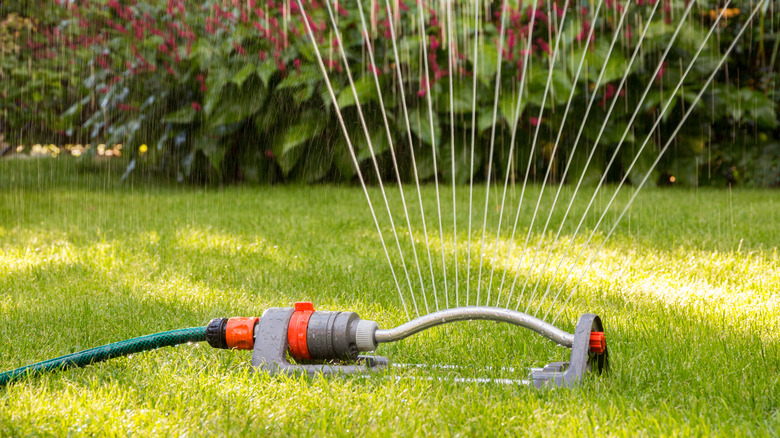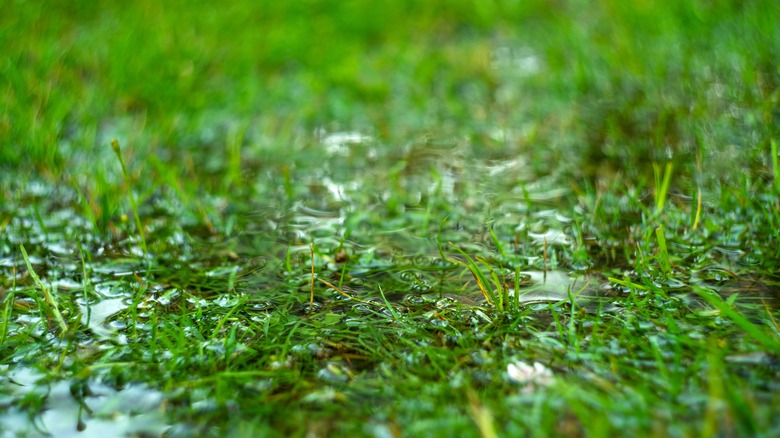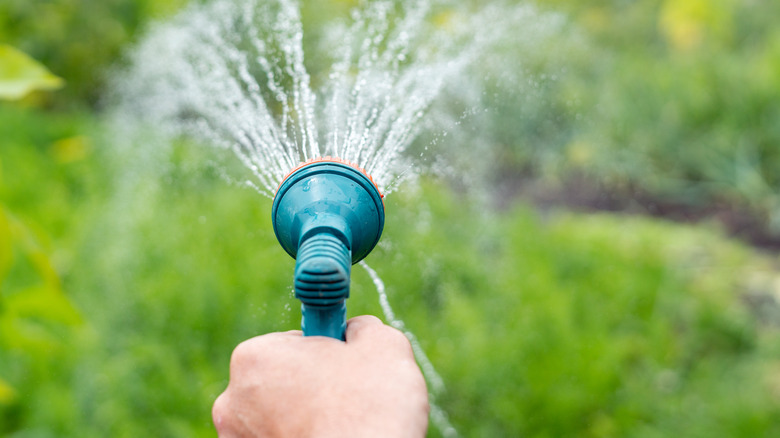What Watering Your Lawn Every Day Actually Does
You might look at the beautifully manicured lawns around your neighborhood and wonder, "how much water do those people use? Their yard is impeccable!" The answer might surprise you. According to the EPA, the average household uses around 320 gallons of water on a daily basis. Around 96 of those gallons are used outdoors, and over half of those 96 gallons end up watering lawns and gardens. If we're using so much water to feed our lawns, how is it that some look better than others?
The answer can be boiled down to amount and frequency. If you want the perfect lawn, you may need to scale it back and embrace spontaneity, because that's what your grass really wants. Contrary to what you might think, it's not waiting for routine feeding and more is not necessarily the merrier.
Have you ever seen a soccer field after a week or so of constant rain? It's waterlogged and looks more like a pond than a grassy field — and that's not good. Overwatered lawns are a playground for things that you don't want anywhere near you, like mosquitoes. Luckily, it's pretty simple once you learn what to look for.
It's wasteful to the planet and your wallet
Overwatering your lawn can be a serious issue, especially if you live in an area suffering from water scarcity or are dealing with an ongoing drought. On top of that, all that excess water has to go somewhere. Once your lawn has reached maximum saturation, it flows straight to the gutters and then out to the ocean. According to the folks at NOAA, nonpoint source pollution (runoff from city streets, construction sites, lawns, driveways, and farmlands) makes up at least 80% of marine water pollution.
The EPA estimates that unfortunately, around 50% of the water used for feeding lawns goes to waste, which is mainly due to improper technique. By overwatering your yard, you're not just hurting the environment, you're also hurting your bank account. Grass is actually quite resilient and fares better if it's left to dry out in between waterings. The ideal schedule would be every three or so days, just enough to keep the roots moist. Not only will this protect your lawn, but you'll be saving money on your water bill, too.
You could be making it sick
Thatch is basically dead grass, roots, and other grass debris that forms a layer on the topmost section of the soil. If it gets too thick, then this prevents the grass from setting down strong, sturdy roots. It also prevents oxygen from getting to any new growth which might be occurring. On top of that, a thick thatch can also act as a habitat for the not-so-good insects and fungus that can begin eating away at your grass. Therefore, de-thatching your grass as part of your regular lawn care regime is recommended.
By watering sporadically, you're also helping the grass grow thicker, deeper root systems, which makes for a much healthier, happier lawn. Conversely, over-watering pretty much suffocates it, which leads to shallow root systems and it being more vulnerable to disease and pests. Grass benefits from being a bit on the thirsty side (apparently, it's a glutton for punishment). But, how much water is enough? Your lawn should be drinking up about an inch of H2O per week, focusing on a feeding schedule that mimics rainfall — irregularly and deeply.


